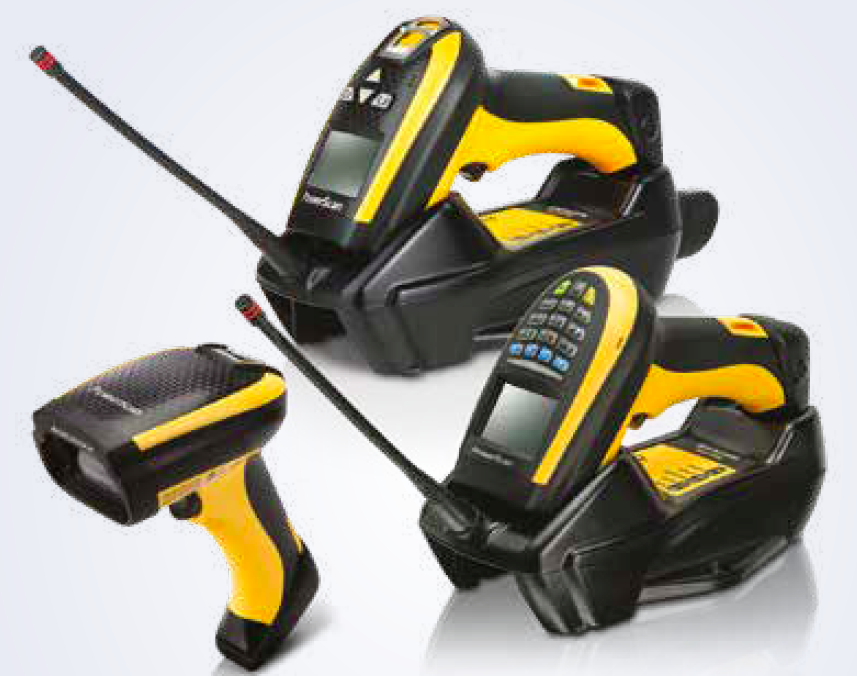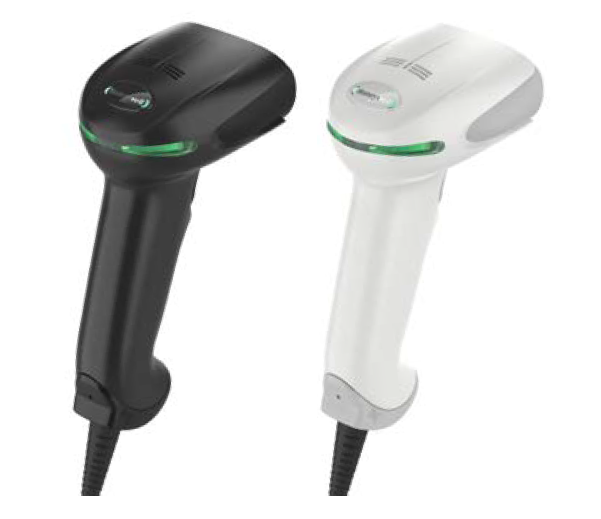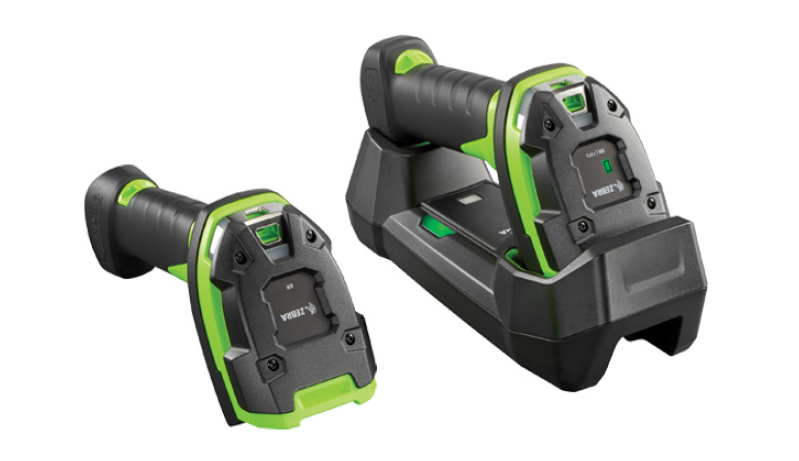The industrial domain has experienced a significant transformation over the last couple of decades. Industrial transformational initiatives, such as Industry 4.0, are not the only reasons technology is increasingly deployed. As products come off manufacturing and assembly lines, they enter the world of logistics, packaging, and supply chain. Barcodes are now commonly employed to identify parts during the manufacturing and assembly process: technology assists product identification, data capture, and workflow processes. Also, keeping industrial production assets running depends on maintenance techniques such as condition-based monitoring and predictive maintenance. For field-based engineers, ease of access to plant schematics, parts lists, and service procedures helps keep downtime to a minimum and productivity high.
This article showcases mobile barcode scanners (readers) and industrial-grade tablets specifically designed for industrial applications.
Mobile technology is essential for achieving high levels of productivity
The fast pace of many businesses today, whether in manufacturing or supply chain and logistics, rely heavily on automation. Production lines and industrial processes are optimised to operate with high levels of overall operational effectiveness, a key measure of manufacturing efficiency. However, the efficiency of identifying and moving assembled products and components from production into the supply chain is equally crucial. Some supply chains, such as food supermarkets, involve multiple locations, from the supplier to warehouses and regional distribution centres to end up in a local store.
Barcodes have become the defacto product identification method, either as a self-adhesive label or printed directly onto the item. Automatic identification and data capture (ADC) has become an established method of selecting, identifying, and tracking an object, large or small, through any form of the industrial or retail process.
Many automated manufacturing processes use machinery mounted ADC barcode scanners to ingest information into a computer system. However, not all tasks are automated; the need for human interaction, selecting and moving parts through the supply chain is equally important.
Examples include:
- Forklift operators selecting products for a shipping consignment.
- Workers on an automotive production line.
- Internet retail order pickers.
These individuals require handheld barcode scanners since they are constantly on the move. Corded barcode scanners are available, but they pose a safety risk and are somewhat restricting if shared, so wirelessly connected scanners offer the most mobility.
Focus on mobile automatic identification and data capture devices
We are probably all familiar with encountering barcodes in our everyday lives. They appear on our groceries, our internet-shopping deliveries, and consumer appliances. You may have noticed two distinct barcode types: 1D and 2D.
Single dimension (1D) barcodes comprise a linear set of vertical lines with varying widths spaced with gaps between them.
Two-dimensional (2D) barcodes are more sophisticated and are typically either square or rectangular. They provide a means of representing more data in a given area than a 1D barcode. Because the information density is greater than a 1D barcode, and the encoding used is much more refined, the resolution and quality of the scanner are significantly more critical.
Multiple 1D and 2D barcode standards are available, each of which defines the usable character set. There are four-character sets in widespread use across the standards: numeric (numbers 0 – 9 only), alpha-numeric (0-9 and A-Z), GS1 AI 82 (adds special characters to alpha-numeric), and full ASCII (any ASCII character with a value 0 – 127).
Numeric 1D barcode examples include EAN12, UPC-A, and Code-11. Full ASCII 2D codes include Aztec, QR and MaxiCode.
When selecting a barcode scanner for your application, these are the key considerations to check when reviewing the datasheet.
Barcode standards supported: What are the barcode standards you need to support? Some readers only scan 1D barcodes, and over its lifetime, you may consider migrating to using a 2D format.
Durability: Like any handheld device, there is always a risk of accidentally dropping or falling during use. The datasheet should indicate the scanner’s survival ability of drops and tumbles onto a concrete surface multiple times. Also, what are the environmental conditions where the scanner will be used? Is ingress protection from dust or moisture required?
Scanning performance: The ability of the scanner to successfully decode 1D and 2D barcodes from different distances and angles will vary. An operator sitting in a forklift truck may not be able to touch the scanned item, for example. Typical maximum scanning distances for a 2D code are 200 mm.
Radio standards: Commercially available wireless barcode scanners employ either an open wireless standard such as Wi-Fi or a vendor-proprietary method. Check if it supports the wireless protocol you intend to use.
Battery life: Most handheld devices are expected to work throughout the working day. Will the scanner’s battery last for a shift without recharging? Will it be necessary to install charging points at operator workstations?
Accessing information on the go
Another aspect of workforce mobility involves access to critical information. For example, plant maintenance staff require access to work orders, asset diagrams, parts lists, and service manuals to perform their job. Continually returning to a workshop to access printed documentation reduces productivity, so tablet computers offer a convenient method of accessing relevant enterprise systems and applications.
When considering the use of an industrial tablet computer, here are some of the key selection criteria:
Operating system: Check which operating systems the applications use. Microsoft Windows, Linux, and Android are popular operating systems.
Touchscreen type and size: The screen size dictates the tablet’s physical size. Smaller tablets are far more convenient to carry, but some applications stipulate a minimum screen size. Also, maintenance diagrams may become difficult to read on a small screen. Low-cost tablets may use a resistive touch screen approach; however, they are less reliable and more prone to moisture ingress than capacitive touch screens.
Mechanical durability: As already highlighted for the barcode scanners, the need for mechanical resilience is essential for any handheld device. Since they tend to be physically larger than a scanner, tablet computers and their screens may be more prone to damage from tumbles. Check it is rugged enough for the environment the workforce will use it within.
Battery life: How long the computer will operate from a single charge is heavily influenced by how often the screen is used. The vendor’s datasheet should estimate battery life and indicate the capacity, in mAh, of the unit’s battery. Removable and ‘hot-swappable’ batteries are worthwhile options if available.
Additional features: Some industrial tablet computers may feature other capabilities, such as an integrated barcode scanner and various docking stations or holsters.
Barcode scanners and industrial tablet computer showcase
Barcode scanners
The Datalogic Powerscan PM9501 series – see Figure 1 – can read a wide variety of 1D and 2D barcodes, regardless of orientation, up to 1 m depending on the code’s type and resolution. Weighing approximately 450g and ergonomically designed to be comfortable in use, it features an intuitive aiming system and a soft pulsed white scanning illumination light.

The PM9501 is available in various configurations with two display options and either four or sixteen configurable keys, permitting two-way interaction with the host application.
Wireless communication uses Datalogic’s STAR Cordless system that permits point-to-point or multi-point configuration in the ISM 433 or 910 MHz frequency spectrum. In a multi-point star deployment, up to 16 scanners can access a single wired network-connected radio receiver. The open-air operating range is 50 m for high-speed communication at 433 MHz and 170 m for 910 MHz.
A docking cradle provides charging and wired network communication using Industrial Ethernet or Modbus.
The environmental specifications of the PM9501 include an IP65 ingress protection rating and the ability to survive 50 drops from 2.0 m height onto a concrete surface.
The Zebra LI3600-ER is an example of an ultra-rugged 1D barcode reader – see Figure 2.
The Zebra LI3600 is available in both corded and cordless versions. The cordless version uses Bluetooth communication to communicate with the host docking cradle. Supported network interfaces include Ethernet IP, Industrial Ethernet, and TCP/IP.
It can survive multiple 3 m drops onto concrete and up to 7,500 tumbles from 1 m. Reader decode capabilities include ten 1D barcode formats, and the decode range is up to 17 m for the Code 39 100 mil standard. Operation permits up to 100,000 scans from on a full charge of the 3100 mAh Li-ion rechargeable battery.
Another fully corded and extremely durable scanner is the Xenon Extreme Performance (XP) 1950g from Honeywell – see Figure 3. The scanner is purpose-designed for retail applications, capable of reading and decoding 1D and 2D barcodes.

Rugged industrial tablet computers
Figure 4 illustrates the Honeywell RT10W rugged tablet. It features an integrated 1D/2D barcode scanner, a 10.1-inch high resolution 1920 x 1200 dpi screen, and 128 GB storage. The tablet runs the Microsoft Windows 10 IoT 64-bit Enterprise operating system. Wireless connectivity options include Wi-Fi, 4G LTE cellular, and Bluetooth 5.0.

Another rugged tablet is the Zebra ET51/ET56 Microsoft Windows-based tablets – see Figure 5. Available in both 8.4-inch (570 g) and 10.1-inch (765 g) capacitive touch screen versions, it incorporates Wi-Fi cellular and Bluetooth wireless communications. A GNSS receiver supports GPS and Galileo constellations with the option of using an assisted GPS capability. Removable and hot-swappable battery options are also available.

Increasing workforce productivity through mobile technology deployment
With their ability to offer mobile access to critical information and data collection, handheld portable and rugged industrial tablet computers and barcode scanners help improve workforce productivity. This short article has highlighted just some of the benefits mobile technology brings to a workforce constantly on the move.











